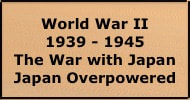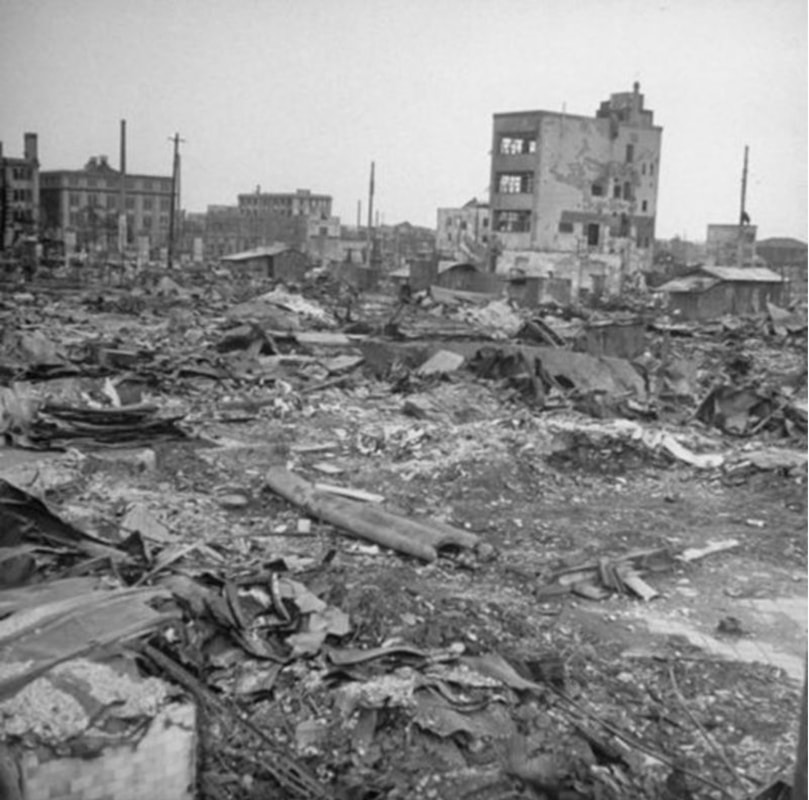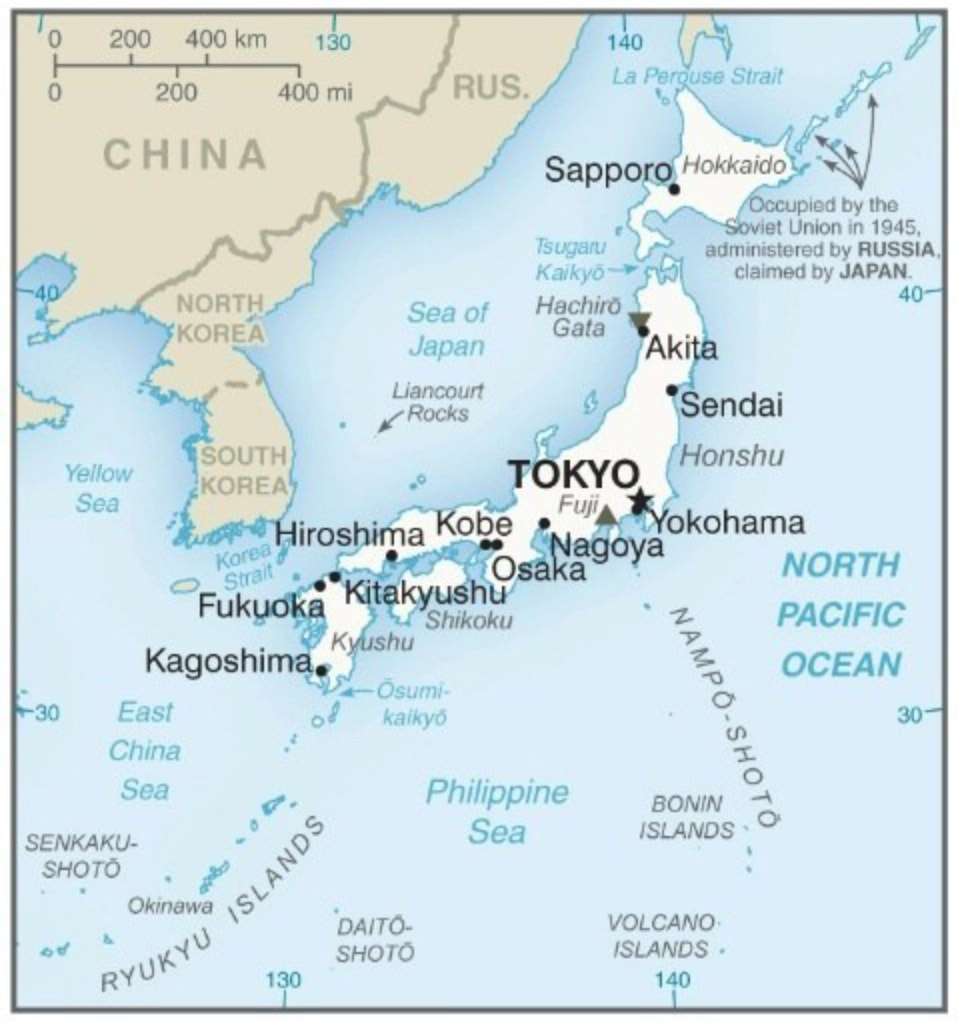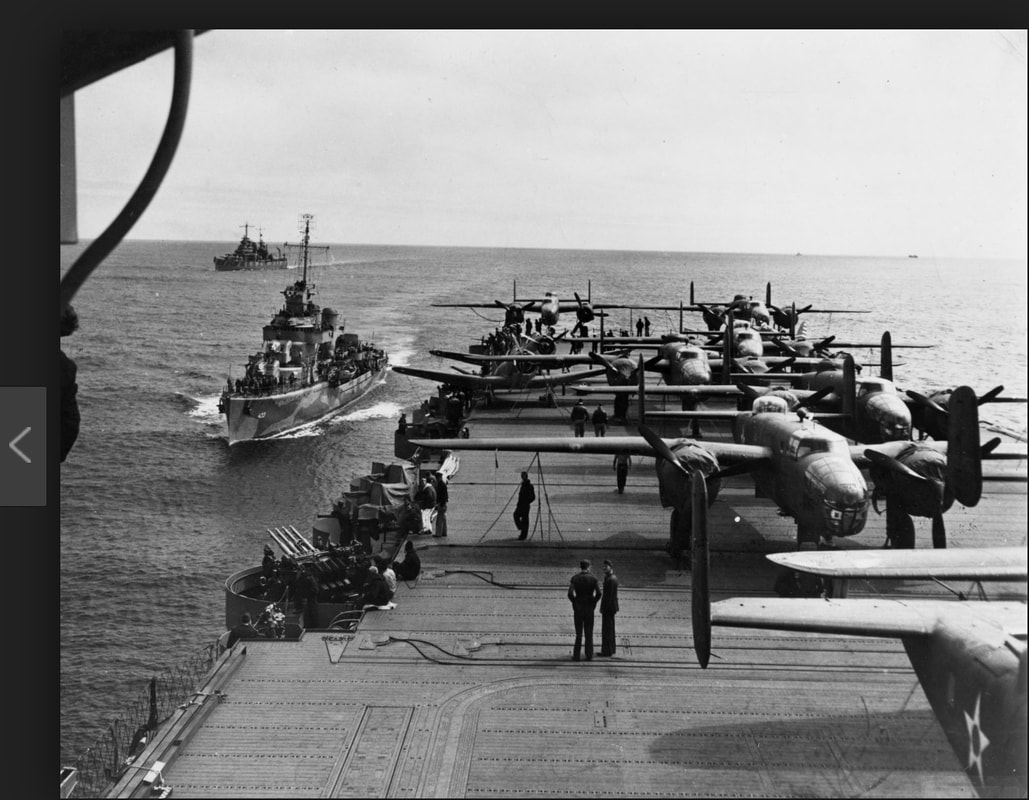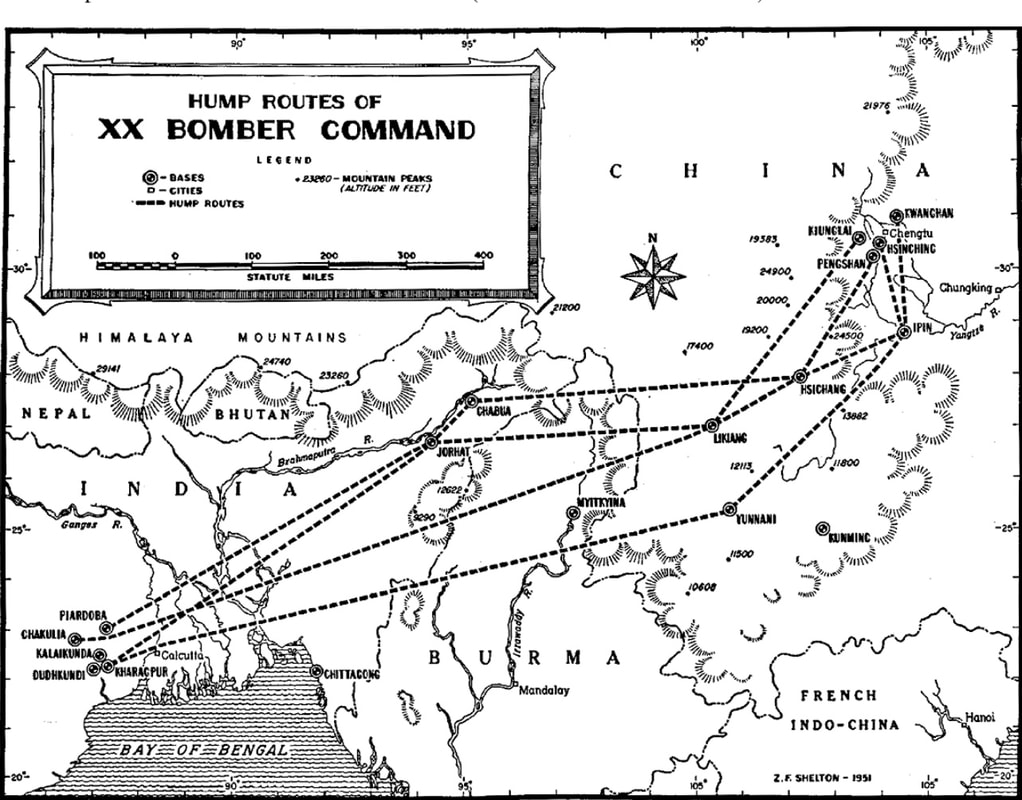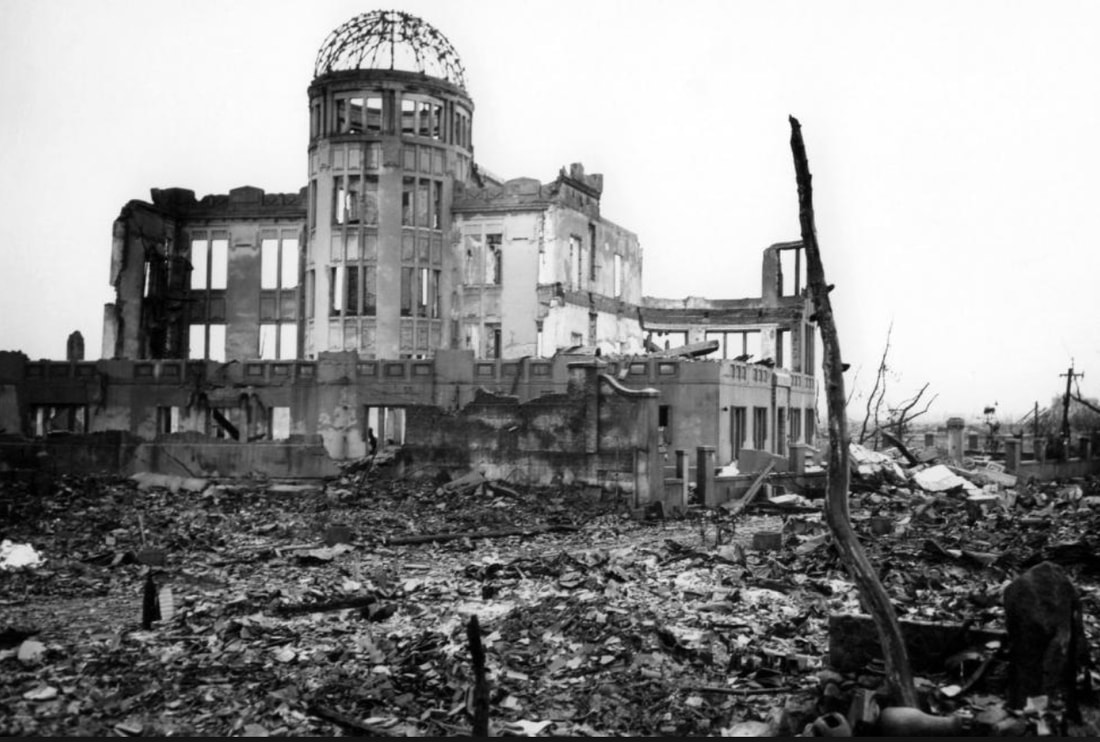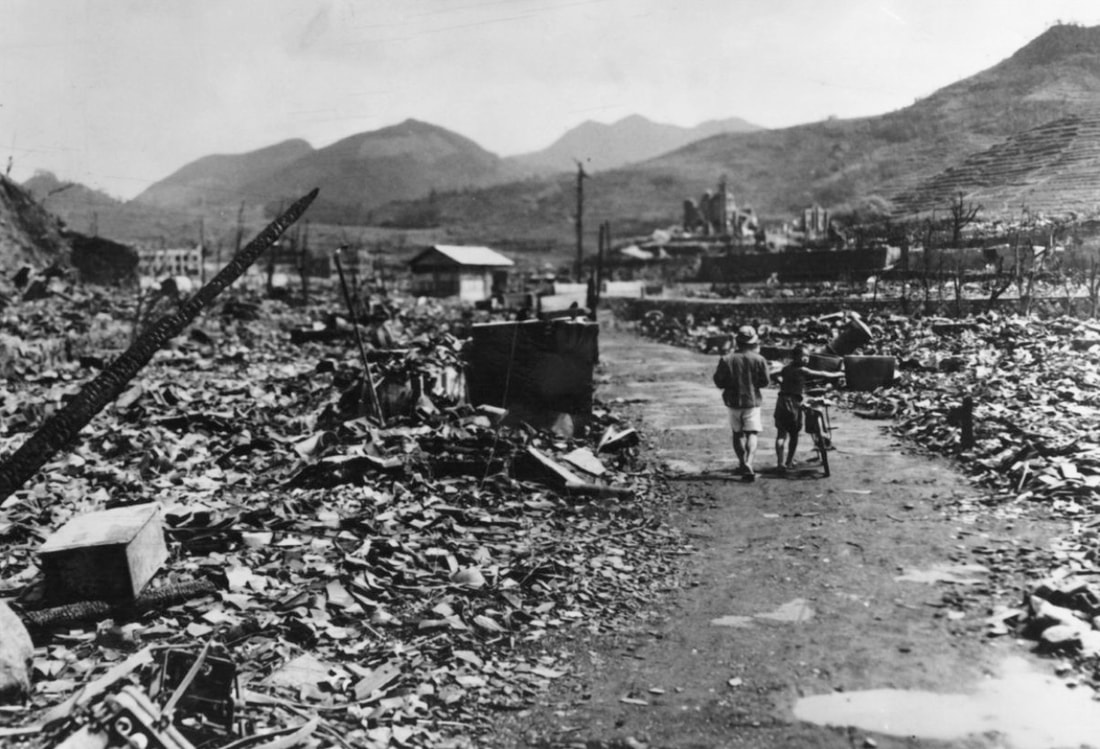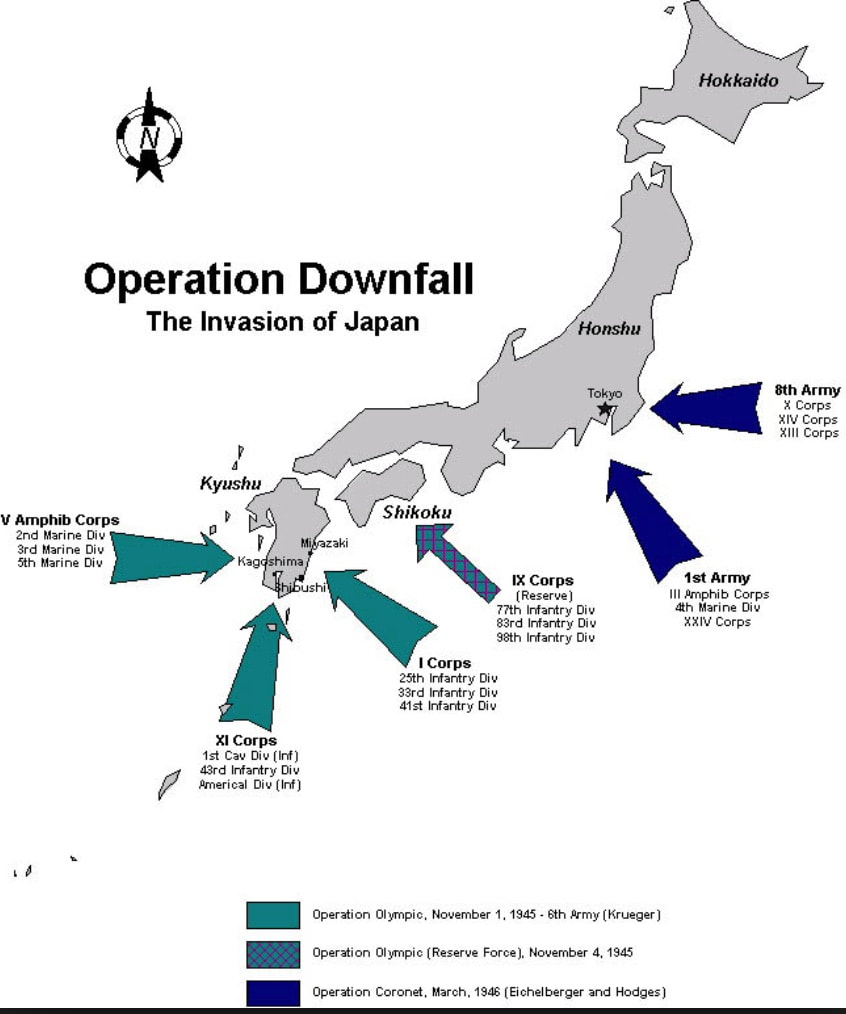bigpigeon.us webpage WWII Japan > Japan Overpowered > Japan Under Attack, © 2023 by Robert A. Christiansen, updated by RAC 4 Jan 2023.
This webpage is currently incomplete.
This webpage is currently incomplete.
|
This webpage covers the War with Japan in the Japanese Home Islands.
The four major home islands, from south to north, are Kyushu, Shikoku, Honshu, and Hokkaido. The seven largest cities, in order of size, are Tokyo, Yokohama, Osaka, Nagoya, Sapporo, Fukuoka, Kobe. Hiroshima is the 11th largest city. Not shown on the map is Nagasaki, a city whose name is known to many, on the west coast of Kyushu. |
Air and Sea Attacks on the Japanese Home Islands
|
April 1942 - The Doolittle Raid
The Doolittle Raid was an attack from the USS Hornet of sixteen B-25 medium bombers led by Jimmy Doolittle against targets in Tokyo and other major Japanese cities. Most bombers then flew on to China, where the crews bailed out. The Doolittle Raid did little damage. However, it was a morale booster and propaganda victory for the United States. On the plus side, it may have encouraged Japan to keep more of its military resources in the Home Islands, rather than in the field. On the negative side, it led to the Japanese murders of thousands of Chinese civilians in areas that had aided Doolittle crew members after they landed. The Japanese Home Islands were not attacked from the air again until June 1944. |
|
The Underseas War
|
|
June 1944 - January 1945 - B-29 Raids from the CBI Theater
B-29 very heavy bomber development was a major WWII project in the United States. The B-29 was designed for use in the vast distances found in the War with Japan. The B-29 first saw combat in the China-Burma-India (CBI) Theater in June 1944, flying from bases in India against targets in the CBI Theater as well as targets in the Japanese Home Islands. For Home Island targets, B-29s first flew over the mountain ranges known as the Hump to advanced bases in China. B-29 raids of Japan from bases in India were never on a large scale. They were not cost effective and ceased in January 1945. |
|
October 1944 - August 1945 - B-29 Raids from the Mariana Islands
|
|
1945 - Carrier-Based Raids
|
|
1945 - Bomber Raids from Okinawa
|
|
1945 - Naval Bombardment
|
The Atomic Bombs
Russia Enters the War with Japan
The Planned Invasion of the Japanese Home Islands
|
By the summer of 1945, the Japanese island empire had crumbled and the once-powerful Imperial Japanese Navy barely existed. Large portions of major Japanese cities already lay in ruins. The large island of Okinawa 400 miles south of the southern Japanese island of Kyushu was now available for use in Operation Downfall, the final Allied campaign of the war with Japan. The first invasion, Operation Olympic, was planned for November 1.
Japan still had a large army in China and thousands of planes in the home islands suitable for use as kamikazes. The increasing casualty count among Americans as the war approached Japan led many to predict the pending invasions would produce a blood bath among bogh Americans and Japanese. A million young American men born around 1927 viewed their future with apprehension as they, rather than existing veterans, would provide most of the cannon fodder. Fortunately for all parties , the use of nuclear weapons, the Russian entry into the war, and the flexible position of Emperor Hirohito brought an end to the war without an invasion of the Home Islands. |
|
The Japanese Surrender
|
Sources for Big Pigeon's Japan Overpowered > Japan Under Attack webpage:
Pottawattamie Area WWII Dead - Japan Overpowered > Japan Under Attack:
- The webpage header image Tokyo after Firebombing shows the aftermath of the March 1945 B-29 incendiary bombing raids over an area of Tokyo. It is courtesy of http://carynschulenberg.com/wp-content/uploads/2016/03/Devastation-of-Tokyo-2.jpg.
- The photo B-25s on Hornet, April 1942 is courtesy of the Museum of the Air Force.
- The Japanese Home Islands map is courtesy of en.wikipedia.com.
- The map captioned CBI Theater Air Bases Used by B-29 Bombers is courtesy of semanticscholar.org.
- The First Bomb - Hiroshima - 6 August 1945 photo is courtesy of upi.com.
- The Second Bomb - Nagasaki - 9 August 1945 photo is courtesy of truthout.org.
- the diagram The Planned Invasion of Japan is courtesy of kilroywashere.org.
Pottawattamie Area WWII Dead - Japan Overpowered > Japan Under Attack:
- Taken from the bigpigeon.us WWII Dead module.
- The Japan Overpowered > Strategic Air War - Japan webpage has Air Force deaths from the B-29 raids from China and the Mariana Islands directed against Japan .
- In the US Air War with Japan submodule, the Seventh Air Force webpage has other Air Force deaths in or near the Japanese home islands.
- In the US Navy War with Japan submodule, the US Submarine Force and Third & Fifth Fleets webpages have Navy deaths from US submarine and Naval Aviation activity near Japan.
